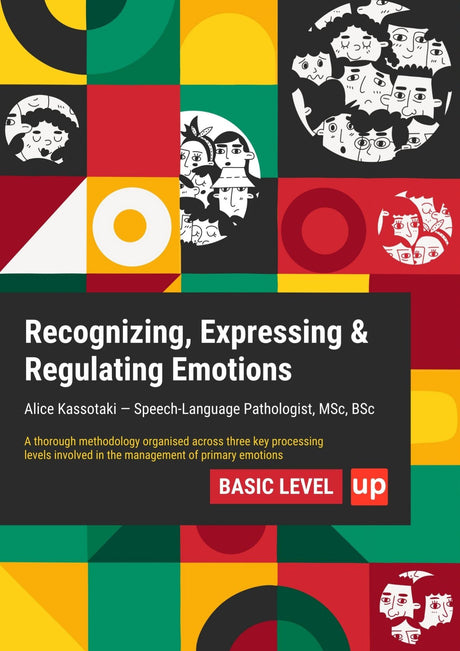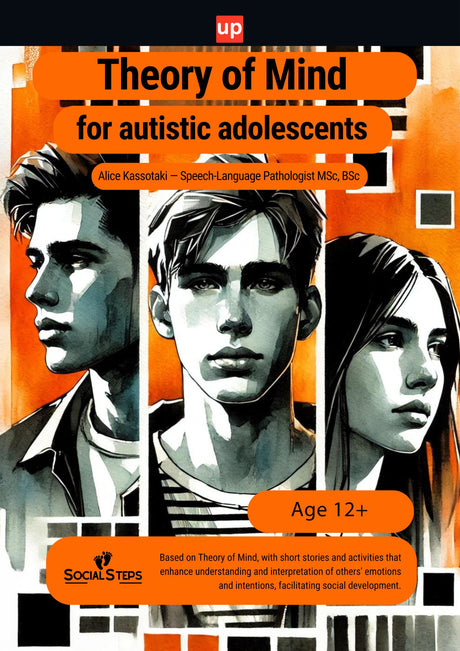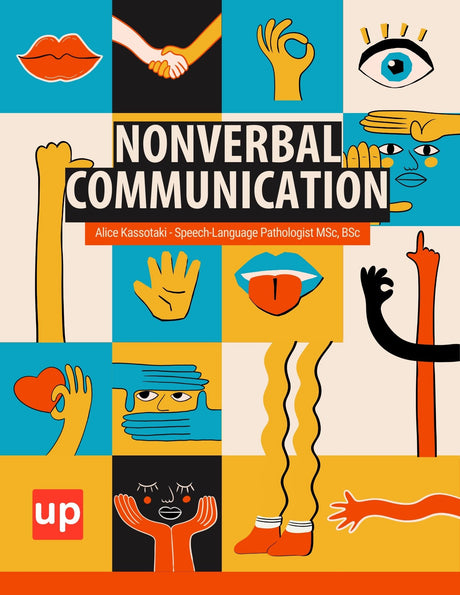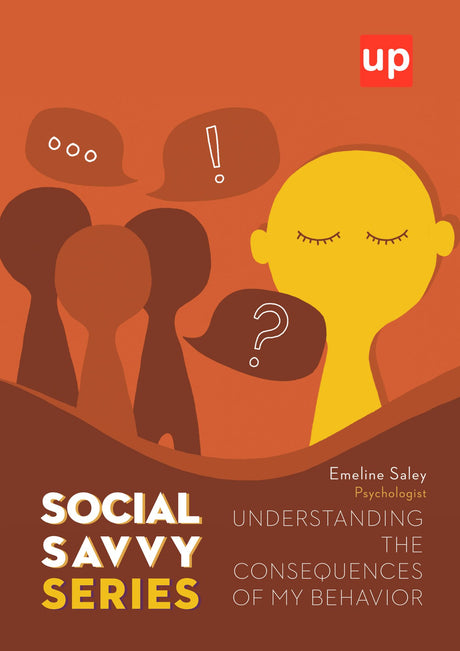Building the Best Autism Classroom: Key Strategies and Tips
Looking to create an effective autism classroom? This article offers essential strategies for setting up a supportive environment, enhancing communication, and incorporating structured routines to meet the unique needs of autistic students.
Key Takeaways
- Creating a welcoming and sensory-friendly classroom environment is essential for supporting autistic students’ learning and engagement.
- Effective communication strategies, including simplified language and visual supports, enhance comprehension and social skills for students with autism.
- Incorporating special interests into lesson plans and utilizing positive reinforcement techniques contributes to better engagement, behavior management, and overall academic success.
Creating a Welcoming Environment for Autistic Students

A welcoming classroom environment for autistic students lays the foundation for their success. Understanding their sensory needs and communication styles, and setting up a supportive classroom, are key factors.
Strategies that accommodate the diverse communication needs of autistic students help them feel secure and engaged in their learning environment.
Setting Up Sensory-Friendly Spaces
A well-organized classroom environment should balance sensory input by incorporating both quiet areas and visually stimulating elements. Natural lighting is preferred, as harsh fluorescent lights can be distracting and uncomfortable for students with autism. Flexible seating options, such as stability balls and fidget tools, can help meet diverse sensory preferences among students. Additionally, implementing sensory breaks throughout the day helps students regulate their sensory needs and improve focus.
Understanding sensory needs is crucial for supporting autistic students effectively. Having a quiet room or designated area for retreat when overwhelmed by sensory stimuli can make a significant difference. This space should include tools like noise-canceling headphones, fidget toys, and weighted blankets to help manage sensory issues.
Using Visual Supports Effectively
Visual supports are vital in teaching students with autism, helping make abstract concepts more concrete and understandable. Visual aids like schedules and social stories help students anticipate and understand classroom routines, reducing anxiety by offering a predictable and structured experience.
Additionally, visual supports enhance social communication by providing clear examples of expected behaviors in social settings. This supports not only students with autism but also the entire classroom by promoting inclusivity and understanding. Visual cues and aids contribute to a more organized and supportive learning environment.
Effective Communication Strategies for Teaching Students with Autism

Effective communication is crucial in teaching students with autism. Using strategies that accommodate their unique communication needs, such as simplifying language, using visual aids, and engaging students through their interests, helps create a more inclusive and supportive classroom environment.
Simplifying Language and Instructions
Straightforward and unambiguous language significantly enhances comprehension for students with autism. Using concrete, simple language with young children, especially those with autism, and segmenting instructions into smaller components aids understanding.
Using visual or verbal cues before transitions helps students with autism anticipate changes, reducing anxiety. Additional transition time further supports students in adapting comfortably to changes in activities.
These strategies, combined with clear and concise communication, significantly improve how effectively students with autism understand and engage with their learning environment.
Enhancing Social Communication Skills
Activities like sharing time help autistic students practice discussing their interests with peers, enhancing their social communication skills. Group activities and buddy systems promote positive peer relationships. Encouraging students to follow their comfort levels during group activities is crucial for engagement.
Role-playing enhances students’ abilities to interpret and respond to social cues. Teachers promote social behaviors through modeling, prompting, and coaching in structured activities. Understanding the double empathy problem helps autistic students navigate social interactions more effectively.
Structured Routines and Predictability

Routine and consistency are vital for many children on the autism spectrum to thrive academically and socially. Predictable routines reduce anxiety and provide a sense of security for students with autism.
Clear routines and prepare students for transitions significantly enhance their learning experience.
Establishing Clear Routines
Structured routines provide stability and reduce anxiety for autistic students, promoting an effective learning environment. Consistent routines help develop a clear understanding of expectations, reducing classroom uncertainty.
Visual schedules enhance the predictability of daily activities, helping students anticipate what comes next and reducing anxiety. These strategies create a more structured and supportive environment for all students.
Preparing Students for Transitions
Preparing students for transitions reduces anxiety and provides security. Techniques like advance notice and visual or verbal cues help students with autism manage transitions more easily. Extra transition time offers additional support during changes between activities.
Rituals surrounding transitions, like a specific song or activity, ease the shift between activities for students with autism. These strategies create a more predictable and supportive classroom environment, enhancing the overall learning experience.
Incorporating Special Interests into Learning

Incorporating special interests into learning boosts engagement and motivation for autistic students. Focusing on topics they are passionate about allows educators to create meaningful and relevant learning experiences that resonate with students on the autism spectrum.
Tailoring Lesson Plans
Integrating topics that teach students are enthusiastic about into lesson plans increases their engagement. This approach helps students connect with the material and makes learning more enjoyable.
For example, if a student is passionate about dinosaurs, incorporating dinosaur-related content into various subjects can boost their interest and participation, making a significant difference in engagement with the curriculum.
Using Interest-Based Projects
Projects aligned with students’ passions lead to heightened enthusiasm and deeper involvement in learning activities. Interest-driven projects foster a deeper connection to the material where students learn.
For instance, a project on space exploration for a student interested in astronomy provides a rich learning experience. These projects cater to students’ interests and help develop critical thinking and problem-solving skills.
Positive Reinforcement and Behavior Management
Positive reinforcement and behavior management techniques are crucial for creating a supportive learning environment for autistic students. Focusing on reinforcement rather than punishment encourages appropriate behavior and reduces problem behaviors.
Implementing Reward Systems
Token economies and reward systems motivate students through classroom incentives. Techniques used in the Incredible Years’ Teacher Autism program include praise, descriptive commenting, and coaching to encourage positive behavior.
Collaboration between teachers and parents is key to reinforcing positive behaviors and skills in children with autism. Consistent reinforcement at home and school leads to better outcomes.
Addressing Problem Behaviors
Understanding the underlying causes of problem behaviors is key to developing effective interventions. Individualized goals based on developmental needs are essential for addressing these desired behaviors effectively.
Incredible Years offers evidence-based programs that show significant improvements in socialization, communication, and emotional regulation. Techniques like calm-down cards help students calm down after experiencing stress.
Sensory Activities for Emotional Regulation
Sensory activities are vital for emotional regulation in autistic students. Understanding sensory needs is crucial to support students effectively and help manage sensory sensitivities.
Calming Techniques
Mindfulness exercises help children with autism self-regulate and deal with uncomfortable emotions. Teachers can implement these activities when a student struggles to calm down. Grounding techniques, such as deep breathing exercises, help children manage emotions and reduce stress.
These strategies significantly help students focus and maintain emotional regulation.
Sensory Tools and Fidget Toys
Fidget toys help children maintain focus and manage emotional regulation in the classroom. Sensory tools like noise-canceling headphones, weighted blankets, and sensory bins provide straightforward sensory experiences.
Creating a Student Retreat Zone with sensory toys, picture books, and calming activities provides a space for students to decompress when feeling anxious or overwhelmed. These tools and spaces are essential for supporting the sensory needs of autistic students.
Professional Development and Collaboration
Ongoing professional development and collaboration are crucial for educators to effectively support autistic students. Training programs provide the knowledge and skills needed to create a supportive classroom environment.
Training Programs for Educators
The Incredible Years’ Teacher Autism program helps teachers tailor their approach to each child’s language ability. It focuses on predictable routines, visual supports, and organized classroom environments to enhance learning for autistic students.
Educators interested in professional development related to autism should request opportunities. Programs like ‘Experts in Action’ serve as self-study tools for Autism programs available to educators.
Partnering with Families
The ‘Schools and Families Together’ program strengthens partnerships between teachers and parents to better support autistic students. Creating individualized support plans through collaboration leads to better outcomes.
Collaborating with families creates tailored support systems that enhance the learning experience and overall success of autistic students. These partnerships are crucial for addressing individual needs.
Autism Acceptance and Awareness Activities

Promoting autism acceptance and awareness in the classroom fosters an inclusive learning environment. Inclusive education improves social skills, empathy, and academic outcomes for students with autism.
Classroom Activities for Autism Acceptance Month
Creating an art project where students decorate puzzle pieces symbolizes unity and diversity within the autism community. An autism awareness poster contest allows students to express their understanding of autism and its impact through creative designs.
These activities raise awareness and promote a sense of community and understanding among students, both autistic and non autistic students.
Highlighting Autistic Role Models
Incorporating stories of famous autistic figures into the curriculum provides a more inclusive educational experience and offers representation to autistic students. Learning about the achievements and experiences of autistic figures fosters understanding and respect among neurotypical peers.
Reading stories about diverse perspectives encourages students to recognize and interpret emotional cues, enhancing communication abilities. This approach creates a more inclusive and empathetic classroom environment.
Summary
Creating an inclusive and effective classroom environment for autistic students requires a multifaceted approach. By setting up sensory-friendly spaces, using visual supports, simplifying language, and incorporating special interests, educators can create a supportive and engaging learning environment. Structured routines and positive reinforcement further contribute to reducing anxiety and promoting desired behaviors. Sensory activities and tools play a crucial role in emotional regulation, while ongoing professional development and collaboration with families ensure that educators are well-equipped to meet the diverse needs of their students.
In conclusion, the strategies and tips outlined in this guide are designed to help educators create a welcoming and effective classroom for autistic students. By fostering an inclusive environment and promoting autism acceptance and awareness, we can ensure that all students, regardless of their neurotype, have the opportunity to thrive academically and socially.
Frequently Asked Questions
What are some key strategies for creating a sensory-friendly classroom environment?
Creating a sensory-friendly classroom environment involves utilizing natural lighting, offering flexible seating options, and incorporating regular sensory breaks to support students' sensory regulation. These strategies can significantly enhance the learning experience for all students.
How can visual supports help autistic students in the classroom?
Visual supports like schedules and social stories effectively help autistic students by clarifying classroom routines, which in turn reduces anxiety and fosters a more structured learning environment. This enhances their overall educational experience.
What are some effective communication strategies for teaching autistic students?
Utilizing straightforward language, breaking down instructions into smaller steps, and employing visual or verbal cues for transitions are effective communication strategies for teaching autistic students. These approaches foster understanding and promote success in the learning environment.
How can educators incorporate special interests into learning to engage autistic students?
Incorporating special interests into learning can significantly enhance engagement for autistic students. By aligning lesson plans and projects with their passions, educators can create more meaningful and relevant learning experiences.
Why is professional development and collaboration important for teaching autistic students?
Professional development and collaboration are essential for teaching autistic students, as they equip educators with the necessary skills and foster meaningful partnerships with families. This approach results in tailored support plans that enhance student outcomes.
Original content from the Upbility writing team. Reproduction of this article, in whole or in part, without attribution to the publisher is prohibited.
References
-
American Psychiatric Association (2013). Diagnostic and Statistical Manual of Mental Disorders (5th ed.). This manual provides a comprehensive overview of autism spectrum disorders, detailing diagnostic criteria and associated features.
-
National Research Council (2001). Educating Children with Autism. This report presents research-based recommendations for educational interventions and strategies to support the learning and development of children with autism.
-
Lord, C., & Bishop, S. L. (2010). "Autism Spectrum Disorders: Diagnosis, Prevalence, and Services for Children and Families." Social Policy Report, 24(2), 1-27. This article discusses the diagnostic processes, prevalence rates, and available services for children with autism and their families.
-
Heflin, L. J., & Alaimo, D. F. (2007). Students with Autism Spectrum Disorders: Effective Instructional Practices. This book provides educators with practical strategies and instructional practices to support students with autism in the classroom.
-
Koegel, R. L., & Koegel, L. K. (1995). Teaching Children with Autism: Strategies for Initiating Positive Interactions and Improving Learning Opportunities. This text offers strategies for promoting positive interactions and enhancing learning opportunities for children with autism.
-
Grandin, T. (2006). Thinking in Pictures: My Life with Autism. This book provides insights into the experiences and thought processes of individuals with autism, offering a unique perspective on the condition.
-
Mesibov, G. B., Shea, V., & Schopler, E. (2005). The TEACCH Approach to Autism Spectrum Disorders. This book outlines the TEACCH program, a structured teaching approach designed to support individuals with autism.
-
Prizant, B. M., Wetherby, A. M., Rubin, E., Laurent, A. C., & Rydell, P. J. (2006). The SCERTS Model: A Comprehensive Educational Approach for Children with Autism Spectrum Disorders. This model provides a framework for addressing the social communication, emotional regulation, and transactional support needs of children with autism.
-
Wong, C., Odom, S. L., Hume, K. A., Cox, A. W., Fettig, A., Kucharczyk, S., Brock, M. E., Plavnick, J. B., Fleury, V. P., & Schultz, T. R. (2015). "Evidence-Based Practices for Children, Youth, and Young Adults with Autism Spectrum Disorder." Journal of Autism and Developmental Disorders, 45(7), 1951-1966









